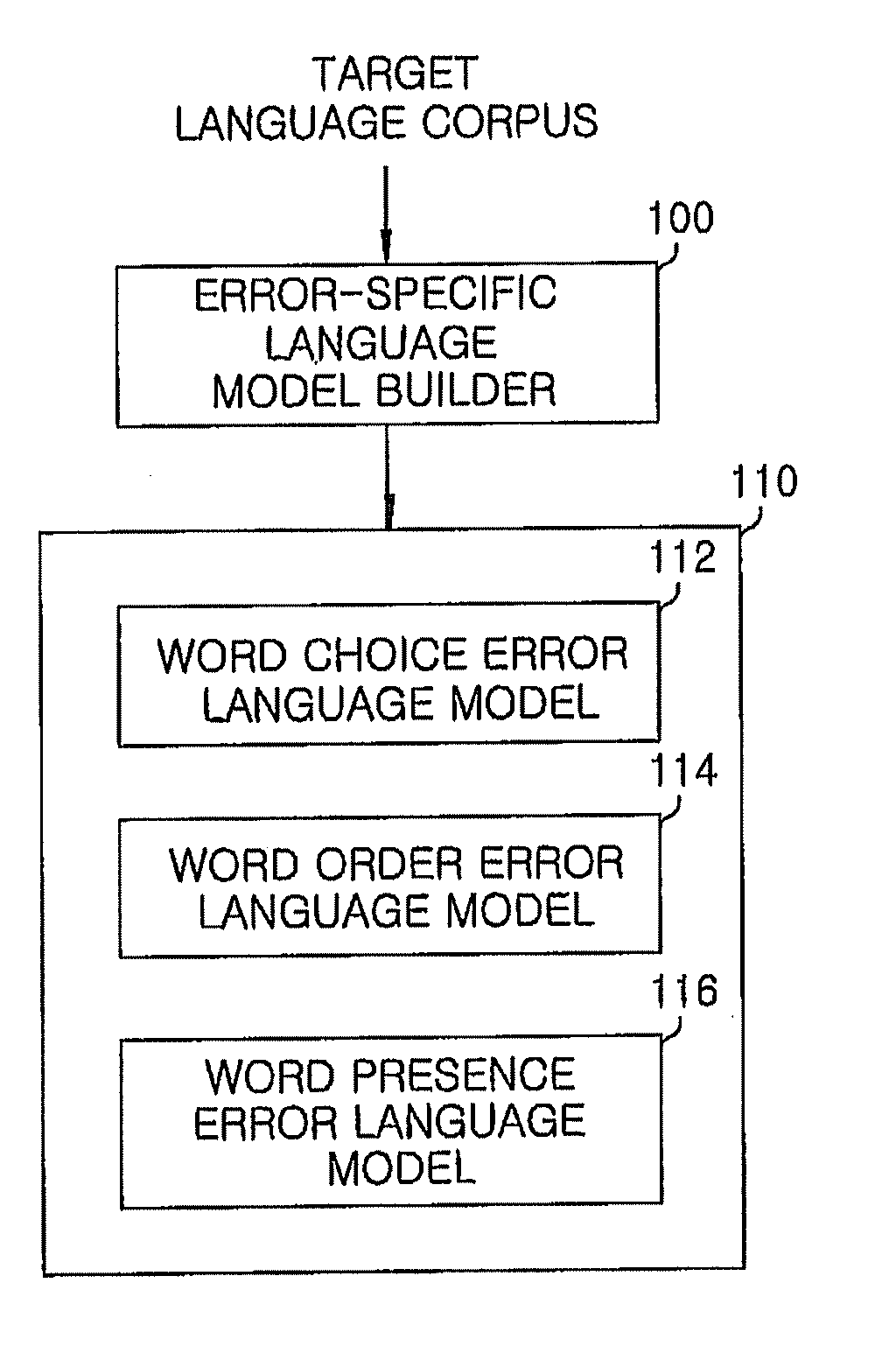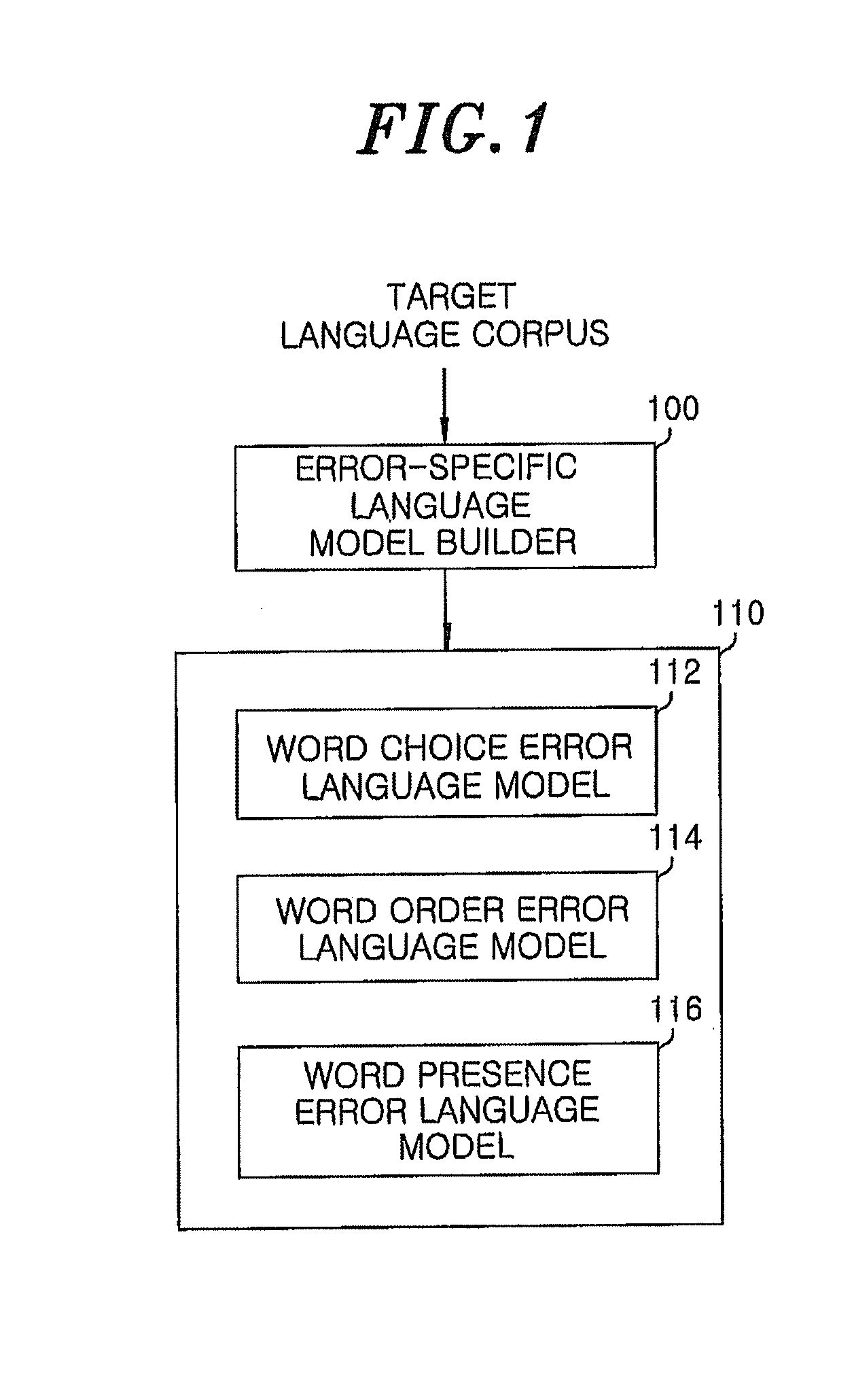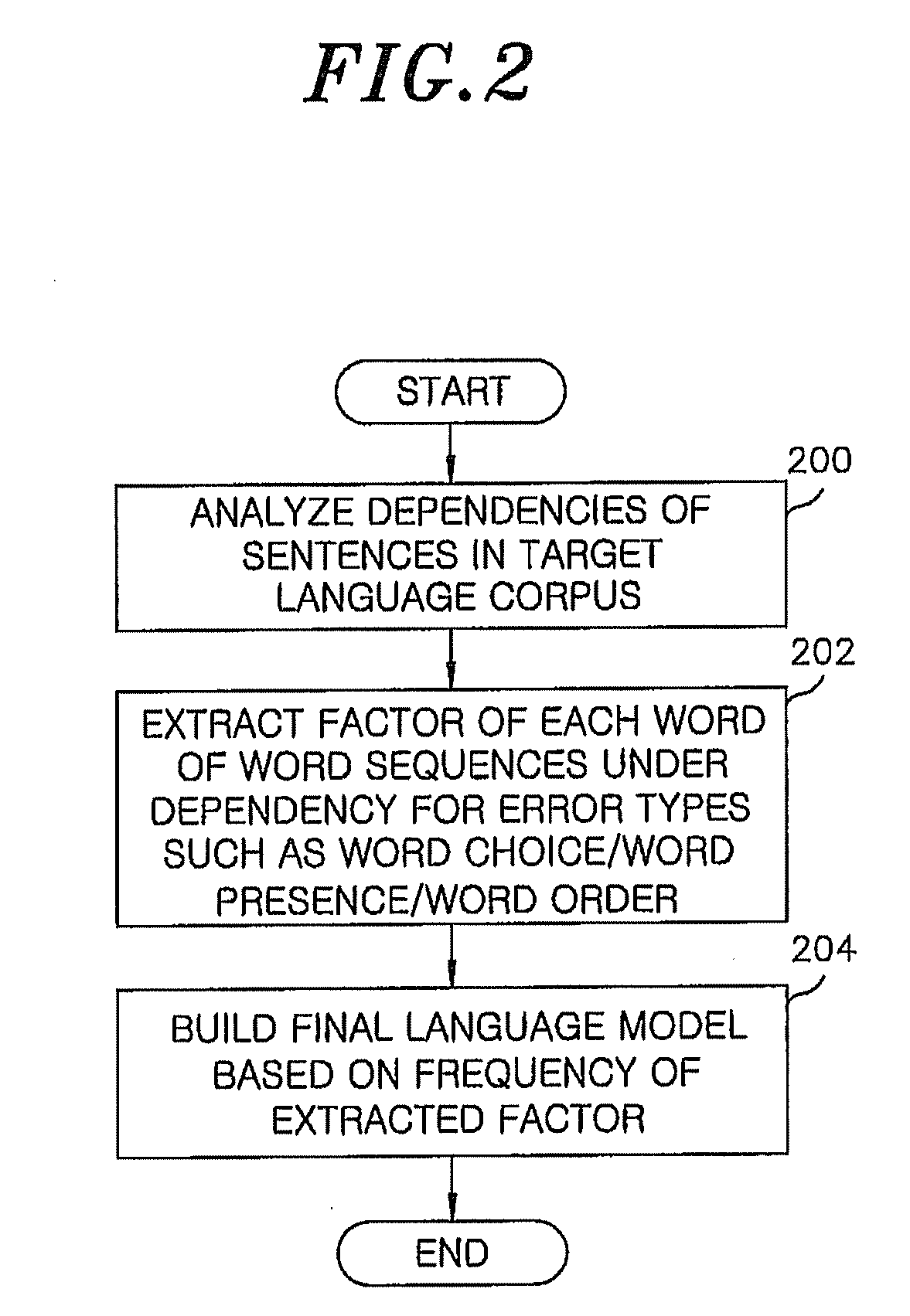Post-editing apparatus and method for correcting translation errors
- Summary
- Abstract
- Description
- Claims
- Application Information
AI Technical Summary
Benefits of technology
Problems solved by technology
Method used
Image
Examples
embodiments
[0032]FIG. 1 is a conceptual diagram showing the building of an error-specific language model according to an embodiment of the present invention.
[0033]Referring to FIG. 1, an error-specific language model builder 100 receives a target language corpus as a training corpus to build a language model, thereby generating an error-specific language model 110 including a word choice error language model 112, a word order error language model 114 and a word presence error language model 116 suitable for the correction of word choice error, word order error and word presence error, respectively, through the target language corpus.
[0034]FIG. 2 is a flowchart showing a process for building an error-specific language model according to an embodiment of the present invention.
[0035]Referring to FIG. 2, after receiving a target language corpus, the error-specific language model builder 100 builds a language model in a form suitable for correcting errors, in which the language model is based on de...
PUM
 Login to View More
Login to View More Abstract
Description
Claims
Application Information
 Login to View More
Login to View More - R&D
- Intellectual Property
- Life Sciences
- Materials
- Tech Scout
- Unparalleled Data Quality
- Higher Quality Content
- 60% Fewer Hallucinations
Browse by: Latest US Patents, China's latest patents, Technical Efficacy Thesaurus, Application Domain, Technology Topic, Popular Technical Reports.
© 2025 PatSnap. All rights reserved.Legal|Privacy policy|Modern Slavery Act Transparency Statement|Sitemap|About US| Contact US: help@patsnap.com



